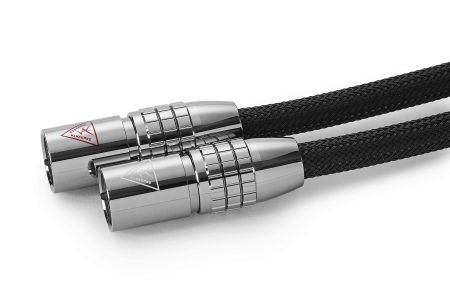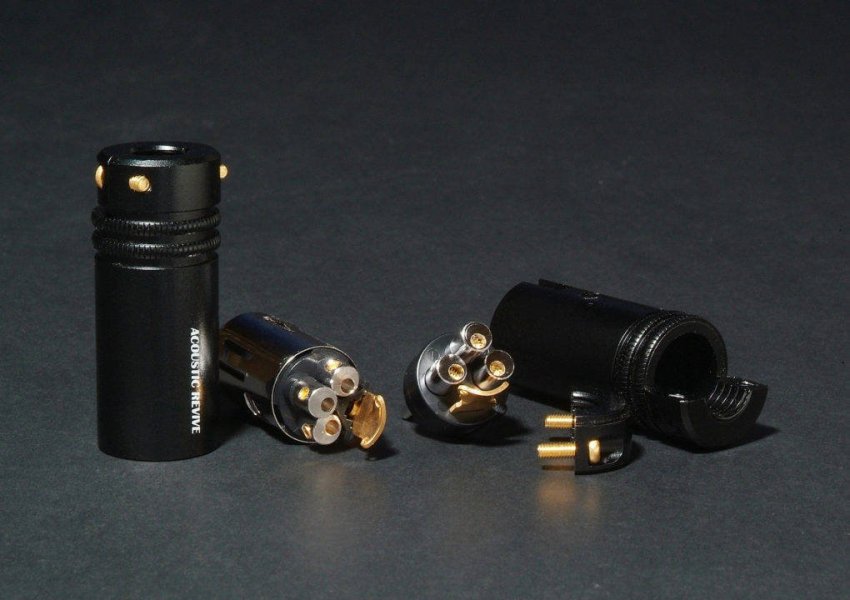It shows that this is all theory, as anyone could easily test the exact same cables using different materials and hear obvious differences. What's obvious to me is this has never been done.
Yes it has. We did extensive testing back in the late 1980s. In one test we used a variety of balanced line cables using two balanced sources and an old studio cable from the 1950s as a control (it used rubber insulation, which was so old it was cracking and had stranded tin-plated wire for conductors). The cables were all 30 feet long, made by Kimber, Purist and 3rd (Esoteric?) whose name escapes me right now.
Two sources were used to drive the cables: a balanced passive volume control vs the direct-coupled balanced output circuit we use as our line stage in our preamps. Starting with the passive control (since people think that a passive
has to be better than an active...), using an Ampex 351-2 tape machine and our balanced phono section as signal sources, the Kimber, Purist and the 3rd cable did well, each having their own 'sound'. The control cable made the system sound broken, like something was wrong with it.
Then we substituted the active line stage in place of the passive controls and did the comparisons again. At this point the differences between the 'exotic' cables were difficult to tell apart
and the control cable sounded just as good. It was a pretty dramatic difference- and everything sounded better overall than when the passive volume control was used. (as a side note the passive control had not only a higher output impedance but didn't support the balanced standard since the output of each phase referenced ground, like many 'high end' balanced preamps made today)
These days one of the best connectors you can buy for balanced operation is the Neutrik connector, which typically has either gold or silver contacts and an excellent dielectric. I've found that a lot of the 'exotic' connectors are copies of older Switchcraft and Cannon designs but with silver or gold contacts rather than tin-plate. Tin gets a bad rap but the simple fact is that it shares gold's quality of not corroding easily and is hard enough to survive repeated use- if you are changing the cable around a lot you're often better off with tin plate rather than more exotic materials simply because its more reliable.
Of course the ultimate proof of what I've been saying here is all the recordings from the RCA, Mercury, Decca and EMI classical and jazz catalogs of the late 1950s, 1960s and 1970s, all of which used cables just like the one we used as a control (although they were new back then, but still using rubber insulation and a bit of twine to prevent the cable being damaged if you tripped over it). These recordings have stood the test of time- the better home systems get, the better these recordings sound. Mercury used to park their recording truck behind Northrup Auditorium in Minneapolis and they had to run the microphone cables about 200 feet to get to the microphone preamps in the tape machines. Somehow the signal arrived without degradation! The simple fact is
the balanced line system is an exotic cable technology designed to prevent the cable from influencing the sound. In the world of high end audio, we just throw money at the problem (while ignoring the prior art) and hope that the cable 'sounds right', ignoring the fact that the problem was solved 70 years ago.
I've seen balanced cable that cost $1000/foot; a customer of mine had 24 feet of this stuff in his system. He didn't want to audition our preamp because that cable was so stiff and being 70 at the time, he didn't want to mess with it. I told him to use the cable I brought instead and he worried that it wouldn't sound as good- I told him 'just don't buy it if it doesn't sound better'. The next day he bought the preamp and the cables I brought. Apparently he sold off the $1000/foot stuff and got enough money to pay for our preamp and still have money left over. There are very exotic materials in that $1000/foot stuff, with nice connectors on either end. But the balanced line system gets rid of cable differences- that's what its for. So all those exotic materials and connectors literally meant nothing in the face of that.
I remember seeing some audio engineers write some letters to the editor at Stereophile back in the 1990s. They maintained that there aren't any differences between cables- that the exotic cable industry was so much snake oil. If you think about the fact that they are used running balanced lines supported by equipment that meets AES48 and the fact that most audiophiles at the time were using single-ended exotic cables which have no termination standard and other bugs, you can see that those engineers had a point, but were also comparing apples to oranges- the audiphiles were right too. But between then and now, balanced lines have become commonplace in the home so now those engineers' comments are considerably less apocryphal.















